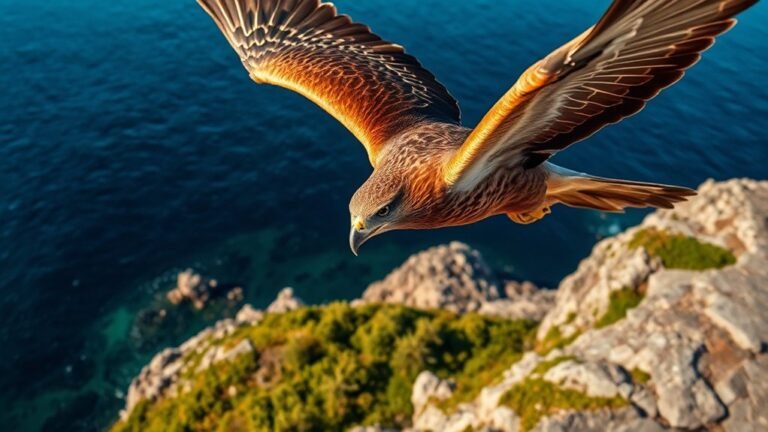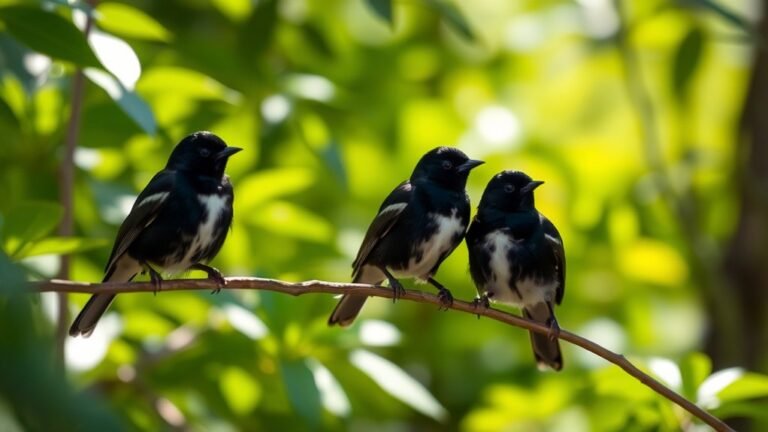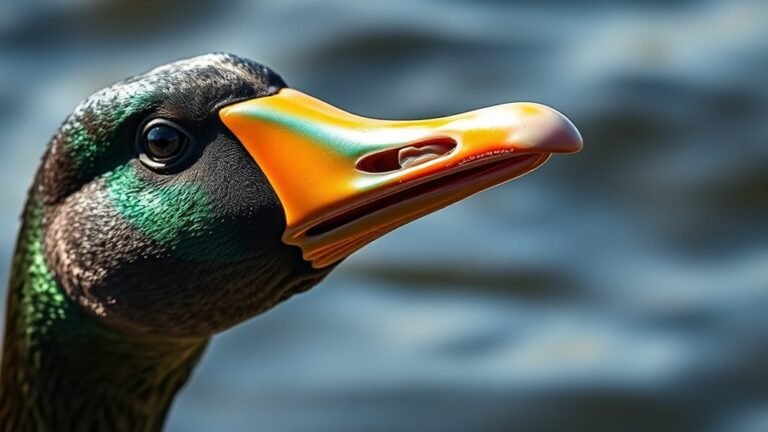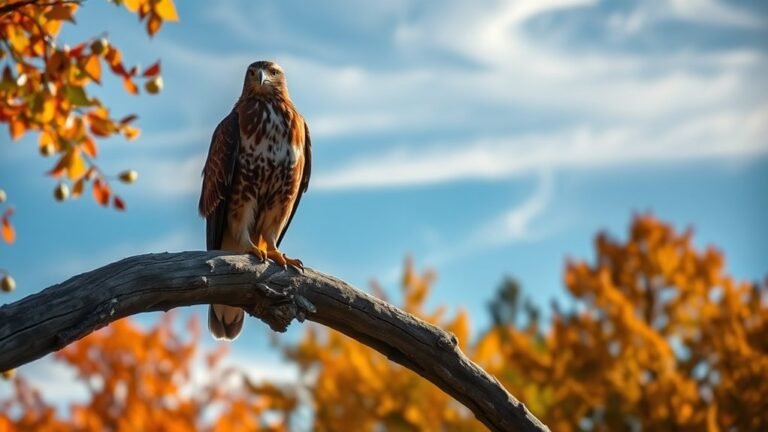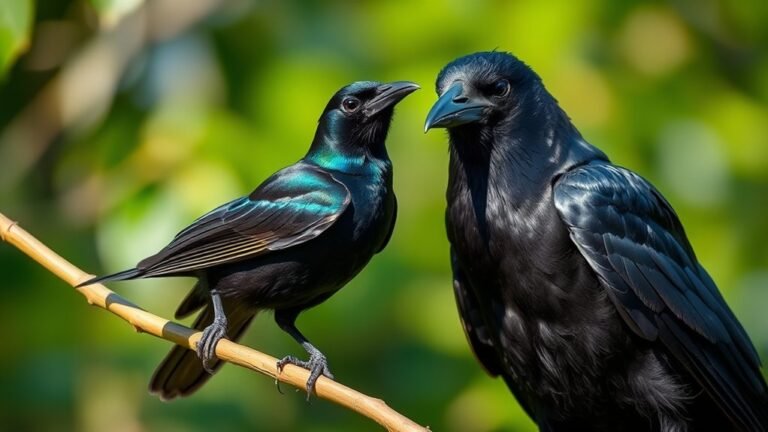Identifying Pink Birds: A Colorful Guide
When you see pink birds in nature, you will find many types. Each bird has its own unique looks and habits. For example, flamingos are famous for their graceful movements. They often dance and show off to each other. On the other hand, roseate spoonbills have a special way of finding food. They move their bills in the water to catch small fish and crustaceans.
These birds love wetlands and coastal areas. Their bright pink color comes from what they eat. The food they eat helps make their feathers colorful and beautiful. As you look for these birds, keep an eye out. What kind will you spot first? What surprises will you discover about them? Enjoy your birdwatching adventure!
A Quick Overview
Flamingos are famous pink birds. They get their bright color from what they eat, including foods rich in carotenoids. You can find them in warm, tropical places, and they love being in groups.
The Roseate Spoonbill is another pink bird. It has pretty pink feathers and a special spoon-shaped bill. You can see this bird in wet areas of the southeastern United States.
Scarlet Ibises are bright red, and they sometimes look pink, too. They live in wetlands and stick together in flocks, which helps them stay safe.
The Pink Robin lives in the moist forests of Australia. This bird is shy, and the males show off brighter colors when it's time to mate.
African Pygmy Geese are small birds that like marshes. They are colorful and often feed together in groups, making their mealtime a social event.
These pink birds add color to our planet and have interesting habits that make them special!
The Flamingo: Nature's Pink Wonder

Flamingos are the most famous pink birds in nature! They live in warm, shallow waters and muddy places, mostly in tropical and subtropical areas.
If you've seen flamingos, you might've noticed how they dance and play with each other. They like to gather in big groups, which is great for feeling connected.
Flamingos have special beaks that help them eat tiny food from the water. They get their bright pink color from their diet, which is full of carotenoids. This shows how their food and their surroundings work together to create their beautiful look.
Learning about where flamingos live and how they behave makes us appreciate them even more. They aren't just beautiful birds; they play an important role in their environment.
Enjoy the beauty of flamingos, and remember how special they are!
The Roseate Spoonbill: A Unique Avian Beauty
The Roseate Spoonbill is a beautiful bird found in wetlands of the southeastern United States. This bird has bright pink feathers that can change color based on what it eats.
You can often see them in shallow waters, where they use their unique spoon-shaped bills to look for small fish and crustaceans.
These birds like to hang out in groups, which makes them even more fun to watch. When they're together, they create a lively scene in their natural habitat.
As you observe them, you'll notice how they move gracefully and show a curious nature. The Roseate Spoonbill brings joy and wonder to anyone who sees them.
Enjoy exploring their world!
The Bald Ibis: A Glimpse of Pink in the Desert
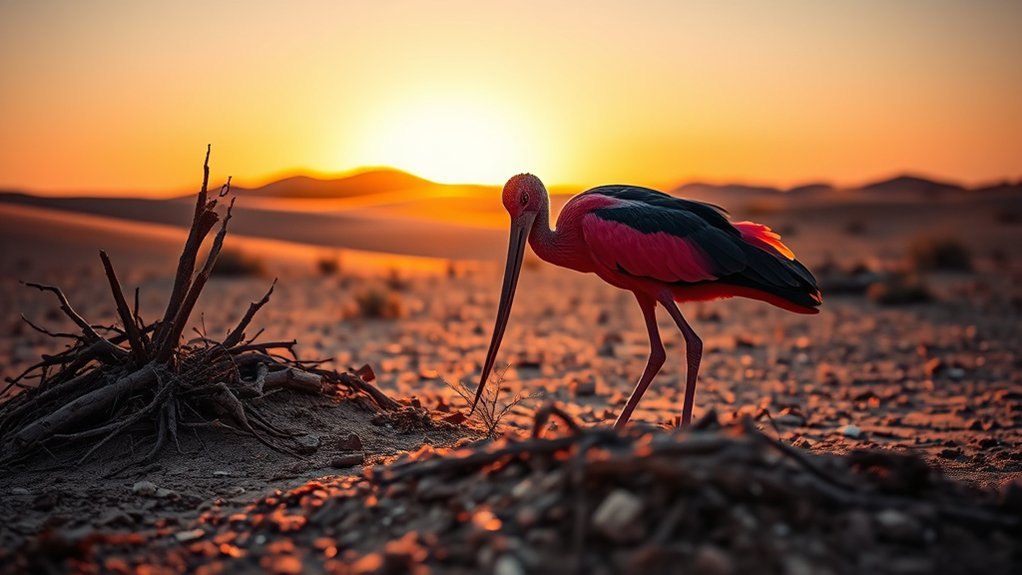
The Bald Ibis is a special bird often found in dry desert areas. It stands out because of its beautiful pink feathers.
These birds like to search for food in groups. They look for small insects and tiny animals in the sand. With their long, curved bills, they can dig into the ground to find hidden treats.
When you watch these birds, you'll see them sharing. They often preen each other and make sounds to bond with one another. During mating season, their pink feathers shine even brighter to attract mates.
Seeing Bald Ibises in nature is a wonderful experience. It shows us that even in harsh environments, there's beauty and life.
Let's appreciate these elegant birds as part of our planet's rich diversity.
The Pink Robin: A Delightful Forest Dweller
The Pink Robin is a lovely bird that lives in the moist forests of Australia. Its bright pink colors make it easy to spot. You can find these birds in areas with lots of plants, near streams or thick bushes. They search for insects and other small creatures on the forest floor, which is their favorite place to find food.
If you watch the Pink Robin closely, you'll see how shy they are. They move quickly from branch to branch and often pause to listen.
Male Pink Robins are especially colorful during breeding season. They show off their bright pink bellies and sing songs to mark their territory.
Seeing a Pink Robin can make you feel connected to nature. These birds remind us of the beauty and variety that exists in our forests.
Keep an eye out—you might just spot one hopping around!
The Hawaiian Amakihi: A Rare Jewel of the Pacific
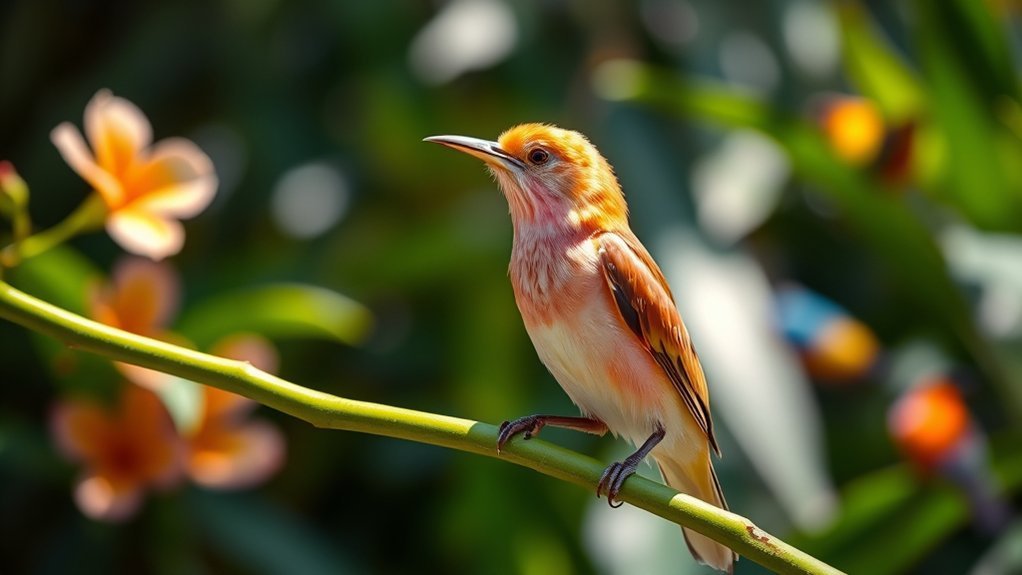
The Hawaiian Amakihi is a small, lively bird found in the beautiful forests of Hawaii. You can easily spot it thanks to its olive-green feathers and bright yellow belly. This little bird loves its home in the native Hawaiian habitat, especially enjoying the sweet nectar from ʻōhiʻa flowers.
Watching the Amakihi is a joy. They dart through the trees, using their special bills to reach inside flowers for food. These birds are very social and often sing to each other, which helps them stay connected with their friends.
As you travel through Hawaii, you'll see how important the Amakihi is to the island's wildlife. This unique bird adds to Hawaii's rich variety of nature, making it a favorite among bird watchers and nature fans.
The Lesser Goldfinch: A Bright Side of the Suburban Landscape
When you walk around suburban areas, keep an eye out for the Lesser Goldfinch. This little bird is bright yellow and has a cool black cap on its head. Watching these birds can be fun and interesting.
Here are some things you might notice about them:
- Eating: Lesser Goldfinches love to eat. They often come to bird feeders, especially to munch on sunflower seeds and thistle seeds.
- Hanging Out: These birds like to be social. You might see them in small groups, chatting with each other and other birds. It's a friendly scene!
- Nesting: Lesser Goldfinches build their nests in bushes or trees. They use the plants around them to stay safe and hidden.
Look for these cheerful birds when you're out and about in the suburbs. They make the landscape brighter!
The Rosy Finch: High Altitude Charm
You can find the Rosy Finch in high mountains. Its bright colors stand out against the rocky hills.
This bird loves living in alpine tundra and on steep slopes, making it a great spot for birdwatchers. The rosy finch is tough; it can survive in harsh weather. It often hides its nests in cliff crevices or under overhangs to stay safe from predators.
The rosy finch mainly eats seeds, grains, and small bugs. It searches for food among rocks and scattered plants.
During breeding season, it also eats insects to give its young extra protein. Watching this charming bird in its home helps us connect with the wide variety of birds on our planet.
The Caribbean Flamingo: Social Birds of the Tropics
Caribbean flamingos are beautiful birds that like warm, tropical places. They live in shallow coastal waters and salty lagoons, where their bright pink feathers stand out.
These social birds love to be around each other and often hang out in big groups. Here's what you can learn about them:
- How they eat: Flamingos use their special beaks to filter food from the water. They mainly eat algae and tiny sea animals.
- How they mate: When flamingos are courting, they dance and show off their colorful feathers. This helps them form strong bonds with their partners.
- How they nest: They create nests out of mud in a mound shape to keep their eggs safe. They work together to take care of their homes and young.
Learning about these amazing birds helps you enjoy their lively world in the tropics even more!
The Pink-footed Goose: A Migratory Marvel
The Pink-footed Goose is a fascinating bird that travels long distances every year. When the seasons change, these geese leave their homes in Greenland and Iceland. They fly to warmer places in the UK and Europe for the winter.
You can spot them flying in V shapes in the sky. This formation helps them work together and save energy during their journeys.
It's important to help protect Pink-footed Geese. Their homes are in danger because of climate change and lost habitats. By supporting wetland preservation and good farming practices, you can help these amazing birds survive.
Watching the Pink-footed Goose is a great way to connect with nature. It reminds us that we all have a part in protecting our environment and the creatures that live in it.
The Scarlet Ibis: A Colorful Coastal Forager
The Scarlet Ibis is a bright red bird that lives in the warm wetlands of South America. These birds love to eat and have some interesting ways to find food:
- Mudflat Foraging: The Scarlet Ibis uses its curved beak to dig into the mud. It looks for small crustaceans and insects.
- Social Feeding: These birds often hunt for food in groups. By working together, they can find tasty treats more easily in shallow waters.
- Nutrient Acquisition: Their diet is full of carotenoids, which gives them their beautiful red color. This bright color helps them attract friends when it's time to mate.
Scarlet Ibises are smart and can adapt to their environment. They form strong bonds with each other in their flock.
Watching these amazing birds helps us appreciate the wetlands and the important role they play in nature. They're truly a sight to behold!
The African Pygmy Goose: A Small but Vibrant Waterfowl
The African Pygmy Goose is a small, colorful bird that many people love to watch. It has bright feathers that stand out and interesting behaviors. You can find these little ducks in fresh water across sub-Saharan Africa. They like places like marshes and wetlands.
When it's time to breed, female pygmy geese look for safe spots among the reeds to lay their eggs. These geese enjoy being social and often feed in small groups. They mostly eat seeds, plants that grow in water, and insects.
You can also notice that they move to different places depending on the weather and how much water is around.
Right now, the African Pygmy Goose is at risk because of losing their homes. It's important to protect their habitats so future generations can enjoy their beauty and understand why they matter to the environment.
The Pink Fairy Armadillo: Nature's Curious Coloration
The Pink Fairy Armadillo is a unique and small animal found in Argentina. It's special because of its soft pink color. This little armadillo lives in dry areas and can hide well in the sand.
Here are some cool facts about the Pink Fairy Armadillo:
- Size: It's only 5 to 6 inches long, making it one of the tiniest armadillos.
- Digging Skills: It has long claws to dig burrows. These help it stay cool during hot days.
- Behavior: It's active at night and likes to eat insects.
Learning about the Pink Fairy Armadillo helps us appreciate this interesting animal.
Observing Pink Birds: Tips for Birdwatchers
When you explore nature, spotting pink birds can be a fun surprise! Here are some tips to help you have a great time birdwatching.
First, make sure you have the right gear. Good binoculars help you see the birds up close. A field guide for your area will help you identify different types of pink birds.
Find a quiet spot to watch. Look for a place where you can see well without scaring the birds away. Be patient and keep still.
If you want to take photos, use a fast shutter speed on your camera. This helps you capture clear pictures of those beautiful birds. Remember to keep a respectful distance so you don't disturb them.
Learn the sounds and behaviors of pink birds. This knowledge can help you spot them more easily.
Joining a group of birdwatchers can also be fun. You can share tips and stories with others who enjoy birdwatching too.
Happy birdwatching!
Frequently Asked Questions
What Habitats Do Pink Birds Typically Prefer?
Pink birds usually like to stay in wetlands and coastal areas. These places have plenty of food for them. When it's time to nest, they build their homes in thick plants or marshes. This helps keep their babies safe from predators and gives them a good place to grow.
Are Pink Birds Rare Compared to Other Colors?
Pink birds are rare because of their special color. This color comes from genetic changes, which makes them less common than birds with brighter colors. You don't see them often in nature, so when you do, it feels special. Their beauty is truly remarkable and worth appreciating!
Do Pink Birds Eat Specific Diets to Maintain Their Color?
Yes, pink birds need to eat special foods that are high in pink pigments, like carotenoids, to keep their bright colors. These foods are important for their health. The right diet helps keep their feathers looking good and can even affect how well they breed. So, what they eat plays a big role in how they look and feel.
How Do Pink Birds Attract Mates?
Pink birds attract mates by showing off their bright colors and unique movements. They perform fun dances and displays to catch the attention of other birds. These colorful feathers and lively actions help show that they are healthy and strong. This makes them more appealing to potential partners. When you watch them in nature, you can see how they work hard to impress each other!
What Conservation Efforts Exist for Pink Bird Species?
Conservation groups help protect pink bird species by focusing on their homes. They work hard to keep these birds safe and happy.
Here are a few ways they do this:
- Habitat Protection: These groups make sure the places where pink birds live stay clean and safe. This means protecting wetlands and other important areas.
- Breeding Programs: They create special programs to help pink birds breed. This helps increase their population.
- Wetland Restoration: They fix up wetlands that have been damaged. Healthy wetlands are very important for pink birds.
- Sustainable Practices: These groups teach people how to use land and resources in a way that helps the birds. This includes farming and fishing in ways that do not harm the birds' homes.
- Community Involvement: They work with local communities. People learn how to protect these birds and their homes, which helps everyone.

Luna is the passionate founder and author of Birds and You, a website dedicated to sharing her love for birds with fellow enthusiasts. Through her engaging articles and guides, she aims to educate and inspire others to explore the fascinating world of birds. When she’s not writing, you can find Luna observing birds in their natural habitats or sharing beautiful bird photography on Pinterest. Join her on this journey to celebrate and protect our feathered friends!


